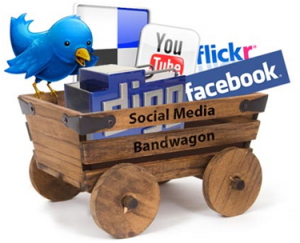Learn the Proper Use of Social Networking for Business
 Social Networking has evolved over time. It’s gone from a way for students to meet and keep in touch, to a means for people of all ages to connect or reconnect with important people in their lives. It wasn’t long before businesses began to discover the potential of social networking to expand their customer base. The problem with this is that, in the beginning, businesses and marketing experts weren’t sure of the best way to exploit the potential of this platform. They looked at the number of users, said “Wow!” and then proceeded to try to use it like a traditional marketing venue.
Social Networking has evolved over time. It’s gone from a way for students to meet and keep in touch, to a means for people of all ages to connect or reconnect with important people in their lives. It wasn’t long before businesses began to discover the potential of social networking to expand their customer base. The problem with this is that, in the beginning, businesses and marketing experts weren’t sure of the best way to exploit the potential of this platform. They looked at the number of users, said “Wow!” and then proceeded to try to use it like a traditional marketing venue.
Facebook tackled the problem of businesses spamming personal profiles in search of market share and other unsavory and annoying practices by re-tooling and enforcing new Terms of Service; Google + keeps business and personal profiles strictly as separate entities, even down to the way each are allowed to make contact with other members. After a few false starts, social networking is finally finding its rhythm as a marketing tool. Instead of directly soliciting potential customers, it’s used as a small part of an overall marketing strategy, and as a means of connecting with customers on a more personal and meaningful level.
The Dean Graziosi Page on Facebook is a good example of the proper use of social networking for business. It has all of the elements that make a Facebook profile for a business work. Let’s examine these elements.
1. Content
Content should be personable, but not too personal, with a good mixture of timely and relevant information that provides value to the visitor and enough personality to invoke a warm and human persona that people can relate to. Using posts to engage and inform consumers allows them to feel that your business cares about them and their needs; it also provides opportunities for an exchange of information. This can give good insight into what your customers want and aid you in directing your other marketing efforts. Make sure to provide links and contact information for your website, blog and other social media outlets in order to tie everything together into a cohesive marketing strategy.
2. Use of Media
Media is an important tool in marketing. Everything from your profile picture, banner, videos and photos is another chance to set the tone of your business and engage and inform your customers. Videos that enhance your product or service, customer testimonials, and photos that give your market a glimpse into how your company can enhance or improve their lives. These are also opportunities to encourage your page viewers to share your videos and information with others in their social contacts.
3. Level of Professionalism
The business profile is just that, a profile of your business. Personal opinions that are unrelated to your business or a proliferation of personal photos and video don’t belong on your business page. Personal profiles should also have your public image in mind, to some extent, and should be kept strictly separate from your business profile.
Your main profile picture on all of your social media outlets should be a photo of yourself, preferably a professional-looking head shot, and should be used on each of your profiles. This is to give a face to the business. Your banner or badge can be your company logo or other identifying feature, but all photos should have relevance to your company and its products.
Used wisely, social networking platforms can supply a means of interacting with your consumer base in a manner that fosters brand loyalty and increases your business in an more organic and lasting way.






